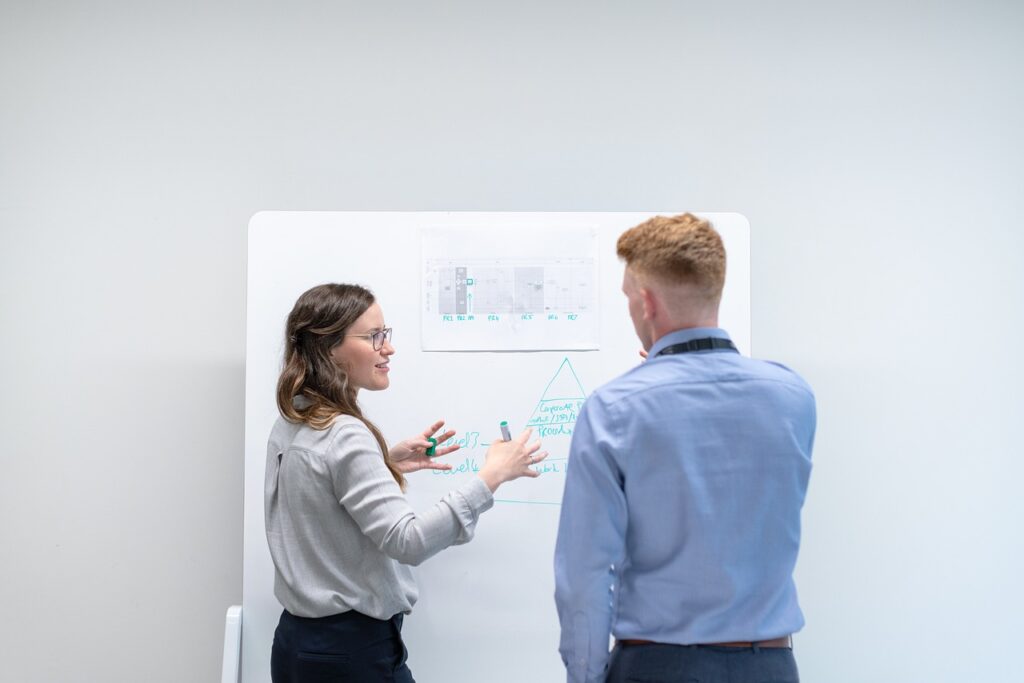By Engineers Sourcing Marketing
BY JOSUE VALLES
Learn about the new business cost trends that will affect you in the coming years about cost engineering
New trends are the perfect pitch for Dan Galorath, Founder and CEO of Galorath, a leader in cost estimation, actionable data, and business cost decision-making expertise.
The business cost landscape is constantly changing, driven by factors such as technological advancements, geopolitical pressures, and new consumer expectations. To remain competitive, companies need to keep up with these trends and implement strategies to optimize their spending.

INTRODUCTION:
Cost management has always played a crucial role in balancing project ambitions with practical budget constraints. However, the increasing complexity of contemporary projects, coupled with high expectations for sustainability and efficiency, requires a more refined strategy.
Today’s cost engineers find themselves navigating a terrain where conventional methodologies intersect with cutting-edge technologies and innovative approaches. Driven by technological advancements, environmental concerns, and evolving project management methods, the field of cost management is undergoing a rapid transformation.
“With more than forty years of experience in engineering, software, estimating and analysis, I have observed the evolution of the cost engineering industry, adapting to economic changes and technological innovations. In this article, I’ll delve into five emerging trends that will impact the future of the industry and how cost engineers can equip themselves with the knowledge and tools needed to steer their projects to success in an ever-changing landscape.”
- Artificial Intelligence Artificial Intelligence (AI): This is set to play an increasingly important role in cost management. AI’s capabilities in predictive analytics, machine learning, and data processing are revolutionizing the way cost engineers approach project estimating and risk assessment. Its impact is manifold. A significant aspect is its ability to improve predictive analytics. AI algorithms can examine vast data sets to forecast potential cost overruns and identify risk factors early in the project lifecycle. This allows cost engineers to make more informed decisions, leading to more accurate and reliable project results. The opportunities presented by AI in cost management are too significant to overlook; However, integration also poses challenges, and one of the main concerns is the need for high-quality data. To overcome these obstacles, it’s imperative to ensure that your team has access to proper systems and programs that provide accurate and complete data to generate reliable predictions.
- Digital twins: Virtual replicas of physical assets, processes, or systems, are reshaping project planning and redefining project cost analysis and prediction. In the coming years, the adoption of digital twins in cost management is expected to increase, with predictive maintenance predicted to dominate the digital twin market until 2028. The strength of digital twins lies in their ability to simulate various scenarios, allowing for early identification of cost overruns and inefficiencies, while making it easier to test the impact of changes within a virtual environment. Real-time data is another significant advantage, providing a continuous flow of crucial information to monitor project progress and costs, facilitate timely adjustments and optimizations, and support a continuous improvement approach. While the initial investment and the need for specialized skills are important considerations, the opportunities presented by digital twins are too important to ignore when taking the right steps, such as proper employee training and access to extensive historical data.
- Leverage data-driven decision-making: The year 2024 will witness a significant leap in the adoption of data-driven decision-making in cost management. Gartner estimates that by 2026, 65% of B2B sales organizations will move from intuition-driven to data-driven decision-making, leveraging technology that integrates workflow, data, and analytics. Powered by advanced analytical tools and the increasing digitization of project data, data-driven decision-making enables cost engineers to move beyond traditional estimating methods to more accurate and dynamic models that adapt to changing project conditions. For example, predictive analytics can forecast potential cost overruns and recommend corrective actions, while real-time data monitoring provides ongoing insights into project performance. Data-driven decision-making ensures more accurate, efficient, and transparent project outcomes. However, effectively integrating these tools into existing workflows requires proficiency in data analysis, as well as the ability to interpret and communicate information to stakeholders.
- Advanced risk analysis and management techniques: The complexity and scale of modern projects require a more sophisticated approach to identifying, analyzing, and mitigating risks. The integration of advanced risk management techniques is vital to the success of the project. Organizations need to take a proactive approach to risk management, employing predictive analytics to anticipate potential issues before they escalate. Various tools are becoming more prevalent, allowing cost engineers to model various risk scenarios and their potential impact on project costs and timelines. However, the challenge lies in the continuous monitoring and updating of risk assessments. As the founder and CEO of a company dedicated to addressing these challenges, I recognize the value of these tools. However, reaping its benefits requires the right resources and support to ensure seamless integration into workflows. Leaders should look for cost engineering technology accompanied by services such as consulting, training, and support to maximize their teams’ utilization of the tools and their ability to address real-world situations.
- Sustainable and environmentally friendly engineering: The adoption of environmentally sustainable practices marks a fundamental shift in project planning and execution. There is an increased focus on incorporating sustainable materials and technologies, driven by growing awareness of the environmental impacts and long-term benefits of eco-friendly options. Data-driven decision-making is crucial for assessing the cost implications of sustainable options. Through dependent cost analysis, cost engineers can balance environmental responsibility with financial viability, ensuring that sustainable solutions are beneficial to the planet and economically sound. According to the Environmental Protection Agency (EPA), sustainable engineering practices minimize environmental impact and lead to substantial long-term cost savings. This is particularly relevant in sectors such as construction and manufacturing, where material choice and process efficiency significantly influence environmental and financial outcomes. It’s not just about environmental awareness; It’s about redefining profitability to align financial goals with broader sustainability and social responsibility goals.
- Conclusion: In summary, the field of cost management is on the threshold of change, characterized by emerging trends poised to redefine the landscape of project planning and execution. Professionals who embrace these trends, equip themselves with the necessary tools and knowledge, and take a forward-thinking approach will lead their projects to success in an ever-evolving environment.
In addition to the trends mentioned above, it is important for businesses to stay informed about developments specific to their industry and region. This will help them identify opportunities to reduce costs and make informed decisions about their cost management strategies.

Business Trends, image obtained from Pixabay
Source: https://www.forbes.com/sites/forbesbusinesscouncil/2024/03/08/the-top-five-trends-impacting-cost-engineering-in-2024/?sh=549cbdfb5fd8

